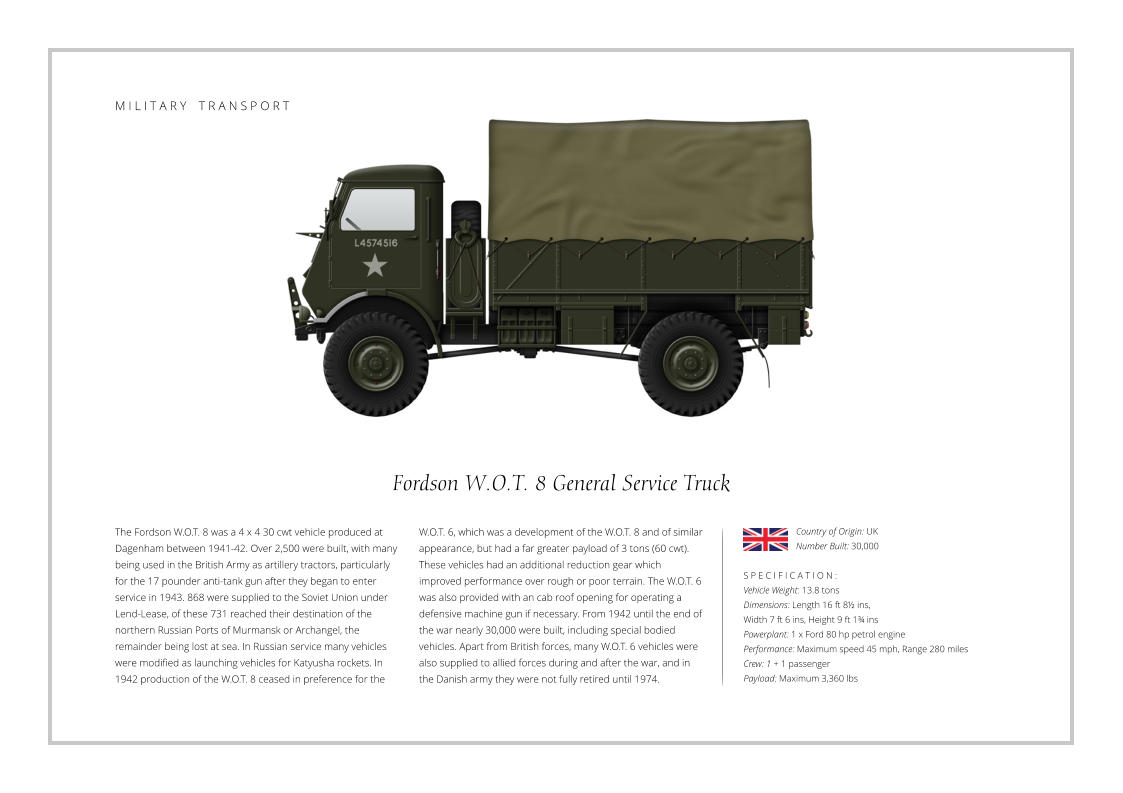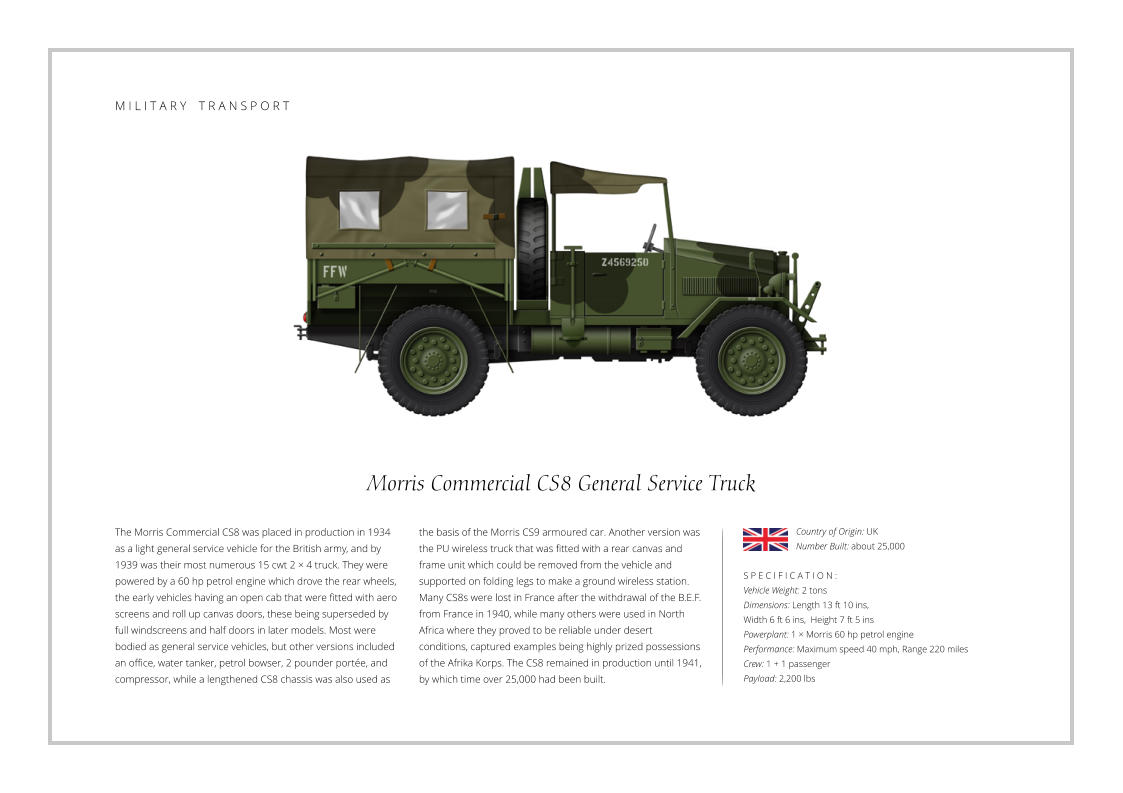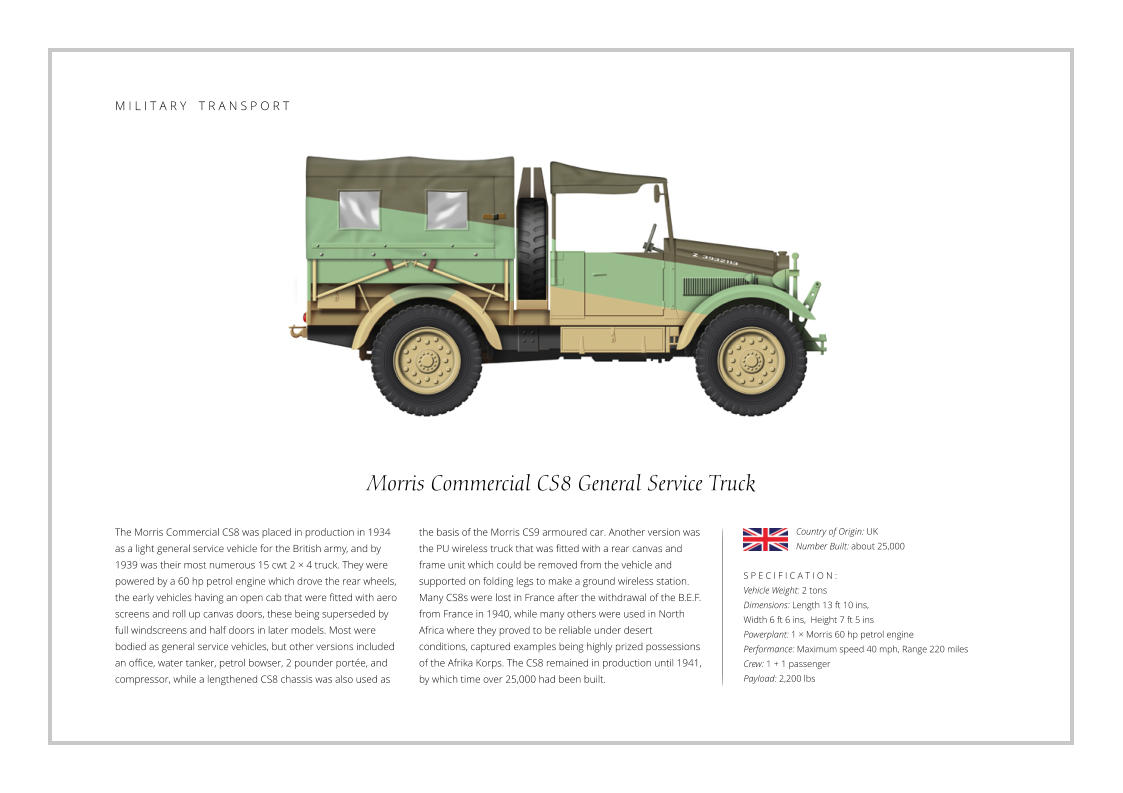A.E.C. Matador
Design work on a 4 x 4 chassis for the War Department had
begun in the mid 1930s by Hardy Motors and the Four Wheel
Drive Company of Southall. AEC purchased the FWD Company
and continued with design with the prototype being ready in
1938. Trials of the vehicle were a success and AEC received an
initial contract from the Ministry of Supply for 200 vehicles, and
by the end of World War Two well over 10,000 had been
delivered. The most numerous version of the Matador was the
artillery tractor. This had a composite wood and steel body with
seating for a gun crew of nine or ten with shell carriers
S P E C I F I C A T I O N :
Vehicle Weight: 7.08 tons
Dimensions: Length 20 ft 9 ins,
Width 7 ft 11 ins, Height 10 ft 2 ins
Powerplant: 1 x AEC A173 95 hp diesel engine
Performance: Maximum speed 38 mph, Range 400 miles
Payload: Maximum 8,450 lbs (3.75 tons)
Crew: 1 + 10 man gun crew
attached to rails in the floor to make it easy to offload the
ammunition, these vehicles being mainly associated with the
5.5 inch medium field gun. Alongside the artillery tractor there
were cargo vehicles used by the Royal Navy and the RAF and a
a range of specialised bodies, while the Matador mechanical
components were used to develop the AEC armoured car. In
the early 1950s problems in developing a replacement led to a
further 1,800 Matadors being purchased with an uprated
engine. The Matador earned a reputation as being a rugged,
powerful and reliable vehicle.
Country of Origin: UK
Number Built: 11,800
A R T I L L E R Y T R A C T O R


Scroll down to see all the illustrations on the page
CMP FAT
CMP stood for Canadian Military Pattern and was applied to a
number of trucks, artillery tractors and utility vehicles built in
Canada. They combined British army requirements and North
American engineering skills, and the CMP Field Artillery Tractor
(FAT) was based on the successful British Morris C8 that had
been developed just before the war. They were manufactured
by Ford and Chevrolet as the CGT (Chevrolet Gun Tractor) and
FGT (Ford Gun Tractor), with the first models being produced in
1940/41 and used by British and Commonwealth forces to
replace lost material after the withdrawal from Dunkirk. They
S P E C I F I C A T I O N :
Vehicle Weight: 4.86 tons
Dimensions: Length 14 ft 1 in, Width 7 ft 6 ins, Height 8 ft
Powerplant: 1 x Chevrolet 85 hp petrol engine
Performance: Maximum speed 45 mph, Range 200 miles
Armament: None
Armour: None
Crew: 1 + 5 (gun crew)
were usually used to tow the 25 pounder gun, and later the 17
pounder anti-tank gun, and were fitted with a winch above the
rear axle that could be used to manoeuvre the gun or extricate
the vehicle if it ever became bogged down. The early vehicles
had a similar body to the Morris C8, but later models went
through a number of design changes that had a variety of
beetle-back bodies with two or four doors and solid or open
canvas covered roofs. They were first used operationally in
North Africa and served throughout World War Two with
Commonwealth and Allied nations.
Country of Origin: Canada
Number Built: Unknown
A R T I L L E R Y T R A C T O R
A R T I L L E R Y T R A C T O R
M I L I T A R Y T R A N S P O R T
M I L I T A R Y T R A N S P O R T
M I L I T A R Y T R A N S P O R T








Pages






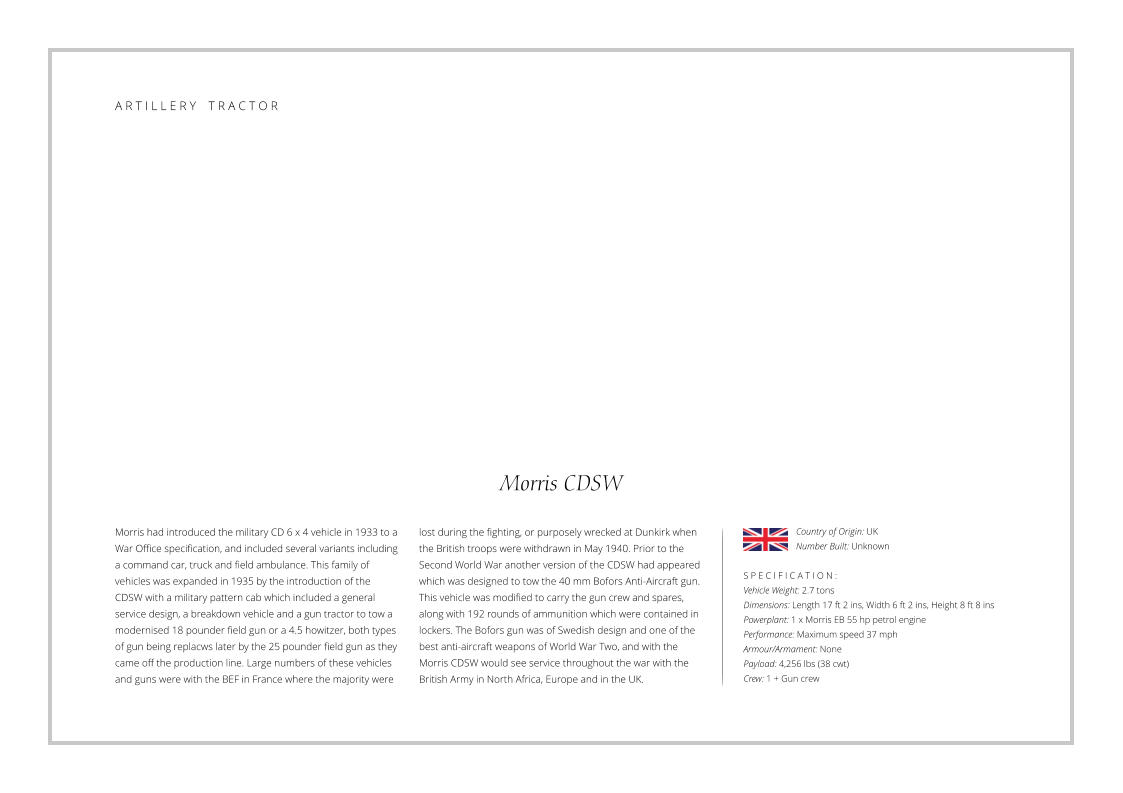
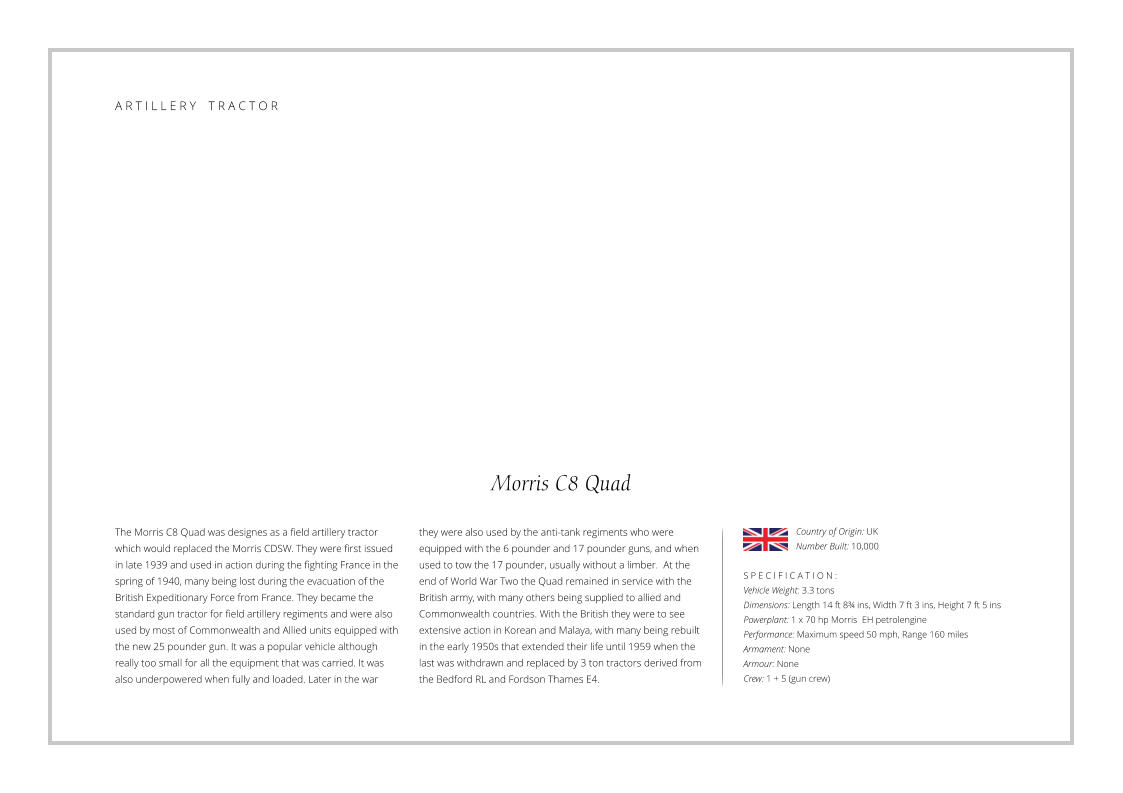
Scammell Pioneer R100
The Scammell Pioneer was a private venture and designed for
use where good roads were scarce. They lacked all-wheel
drive, but the combination of the walking beam suspension,
good traction, and a low-revving engine gave it impressive
pulling power over rough ground at low speeds. They first
appeared in 1927, and although they were never designed for
military use, in 1932 the British War Office purchased an
example and fitted it with an 18 ton semi-trailer for use as a
tank transporter. Actual production of the tank transporter
began in 1937 and differed by having a longer chassis for an
S P E C I F I C A T I O N :
Vehicle Weight: 8.38 tons
Dimensions: Length 20 ft 7 ins, Width 8 ft 6 ins, Height 9 ft 6 ins
Powerplant: 1 x Gardner 102 hp diesel engine
Performance: Maximum speed 24 mph, Range 430 miles
Armament: None
Armour: None
Crew: 1 + gun crew
extended cab to accommodate the tank crew as passengers
and larger rear wheels. 459 were produced for the British Army
but were superseded by the American Diamond T tank
transporter from 1941 onwards. In 1935 the Pioneer R100
heavy artillery tractor entered service with the British army.
These were fitted with accommodation for the gun crew, tools,
equipment, and ammunition, and were used for towing such
artillery pieces as the 7.2 inch howitzer, 6 inch howitzer and 60
pounder field gun. In total 980 artillery tractors were produced
and were used throughout World War Two.
Country of Origin: UK
Number Built: 980
A R T I L L E R Y T R A C T O R

Country of Origin: USA
Number Built: 30
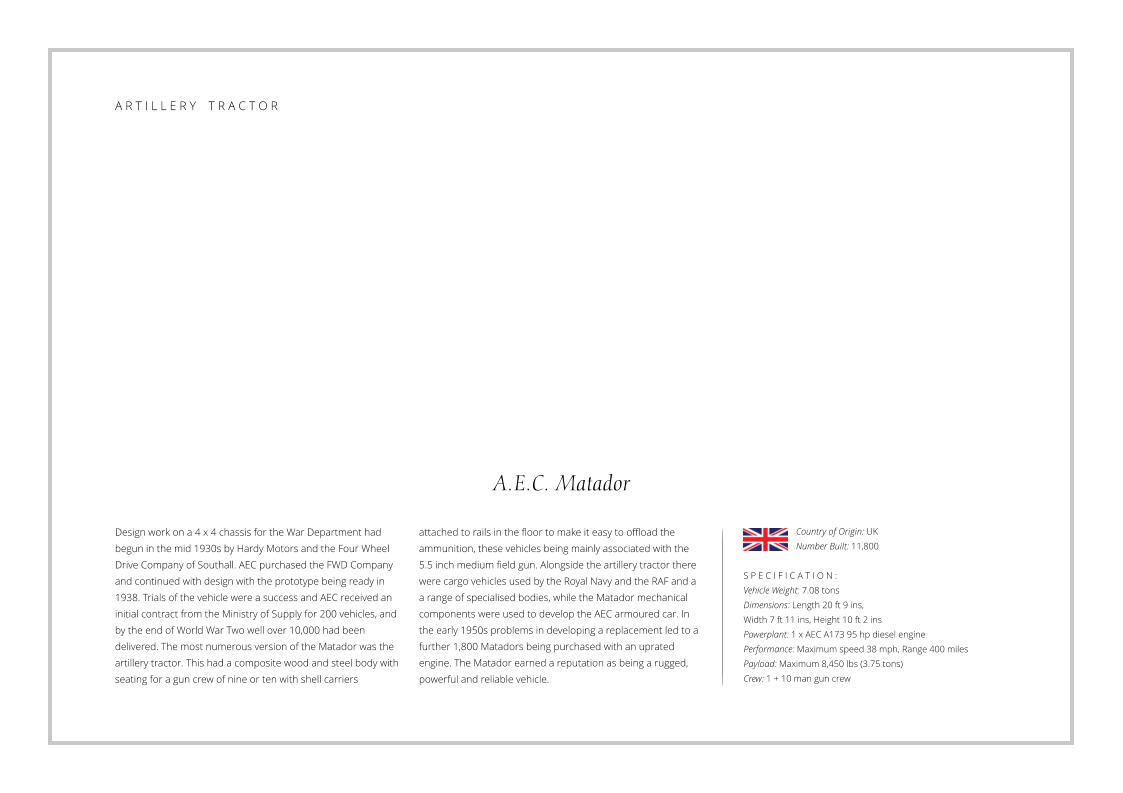
Bedford QLB Bofors Tractor
Shortly after the outbreak of World War Two, Bedford Motors
was contracted by the British War Office to produce a 3 ton 4 x
4 general service truck for the Army. A protoype was ready in
February 1940 with production starting in March 1941. The
vehicle was known as the Bedford QL, and was designed for
use over rough terrain, although the front wheel drive could be
disengaged for use on roads to ease wear on the tyres and
gearbox. The first production vehicle was the QLD, a general
cargo carrier and would became the most numerous version.
Other variants included the QLT troop carrier which had a
S P E C I F I C A T I O N :
Vehicle Weight: 3.2 tons
Dimensions: Length 19 ft 8 ins, Width 7 ft 6 ins, Height 9 ft 10 ins
Powerplant: 1 x Bedford 72 hp petrol engine
Performance: Maximum speed 38 mph, Range 156 miles
Armament: None
Payload: Maximum 3 tons
Crew: 1 + 4 (gun crew)
lengthened chassis and body and was capable of carrying 29
soldiers and their equipment. The QLR was a radio vehicle
fitted with a housing for signal operators and carried an
auxiliary power generator, the same housing was also used as
a Command Post and Cipher Office. The QLB was a towing
vehicle for the Bofors anti-aircraft gun with ample stowage for
crew and ammunition. A few QLs were even used as portee's
for the 6 pounder anti-tank gun in North Africa when there was
a shortage of self propelled guns. Total production of the
Bedford QL was over 52,000 vehicles.
Country of Origin: UK
Number Built: 5,500


Humber FWD Field Ambulance
Just before the start of the Second World War in October 1938,
Humber had introduced the Super Snipe saloon car. The car
had a good performance, having a top speed of 80 mph which
was fast for the day. On the outbreak of World War Two in 1939
Humber set about on the design of a range of military vehicles
based on the common 4 x 4 chassis and 4 litre engine of the
Super Snipe. The front wheels had independent suspension
and the four wheel drive provided good off road performance.
Most examples were fitted with a steel panelled four door
utility body equipped with six seats. These were nicknamed
S P E C I F I C A T I O N :
Vehicle Weight: 2.37 tons
Dimensions: Length 14 ft 1 in,
Width 6 ft 2 ins, Height 6 ft 5 ins
Powerplant: 1 x Humber 85 hp petrol engine
Performance: Maximum speed 50 mph, Range 250 miles
Crew: 2
Payload: maximum 5 casualties
‘The Box’ because of the vehicle’s appearance, many being
used as Staff cars by the army. During 1940-41 a small pick up
truck was also produced with a removable body that could be
used as a radio tent by folding down telescopic legs. The other
major variant was a field ambulance which had a steel panelled
body and could carry up to five casualties, with a maximum of
two stretcher cases, a total of 1,144 of these vehicles being
built. The vehicles remained in production throughout World
War Two with a total of 5,199 vehicles of all types being
constructed, the majority being the heavy utility vehicle.

Country of Origin: UK
Number Built: 1,144
M I L I T A R Y T R A N S P O R T
Humber FWD Heavy Utility Car
Just before the start of the Second World War in October 1938,
Humber had introduced the Super Snipe saloon car. The car
had a good performance, having a top speed of 80 mph which
was fast for the day. On the outbreak of World War Two in 1939
Humber set about on the design of a range of military vehicles
based on the common 4 x 4 chassis and 4 litre engine of the
Super Snipe. The front wheels had independent suspension
and the four wheel drive provided good off road performance.
Most examples were fitted with a steel panelled four door
utility body equipped with six seats. These were nicknamed
S P E C I F I C A T I O N :
Vehicle Weight: 2.37 tons
Dimensions: Length 14 ft 1 in,
Width 6 ft 2 ins, Height 6 ft 5 ins
Powerplant: 1 x Humber 85 hp petrol engine
Performance: Maximum speed 50 mph, Range 250 miles
Armour/Armament: None
Crew: 1 + 5 passengers
‘The Box’ because of the vehicle’s appearance, many being
used as Staff cars by the army. During 1940-41 a small pick up
truck was also produced with a removable body that could be
used as a radio tent by folding down telescopic legs. The other
major variant was a field ambulance which had a steel panelled
body and could carry up to five casualties, with a maximum of
two stretcher cases, a total of 1,144 of these vehicles being
built. The vehicles remained in production throughout World
War Two with a total of 5,199 vehicles of all types being
constructed, the majority being the heavy utility vehicle.
Country of Origin: UK
Number Built: about 2,500
M I L I T A R Y T R A N S P O R T

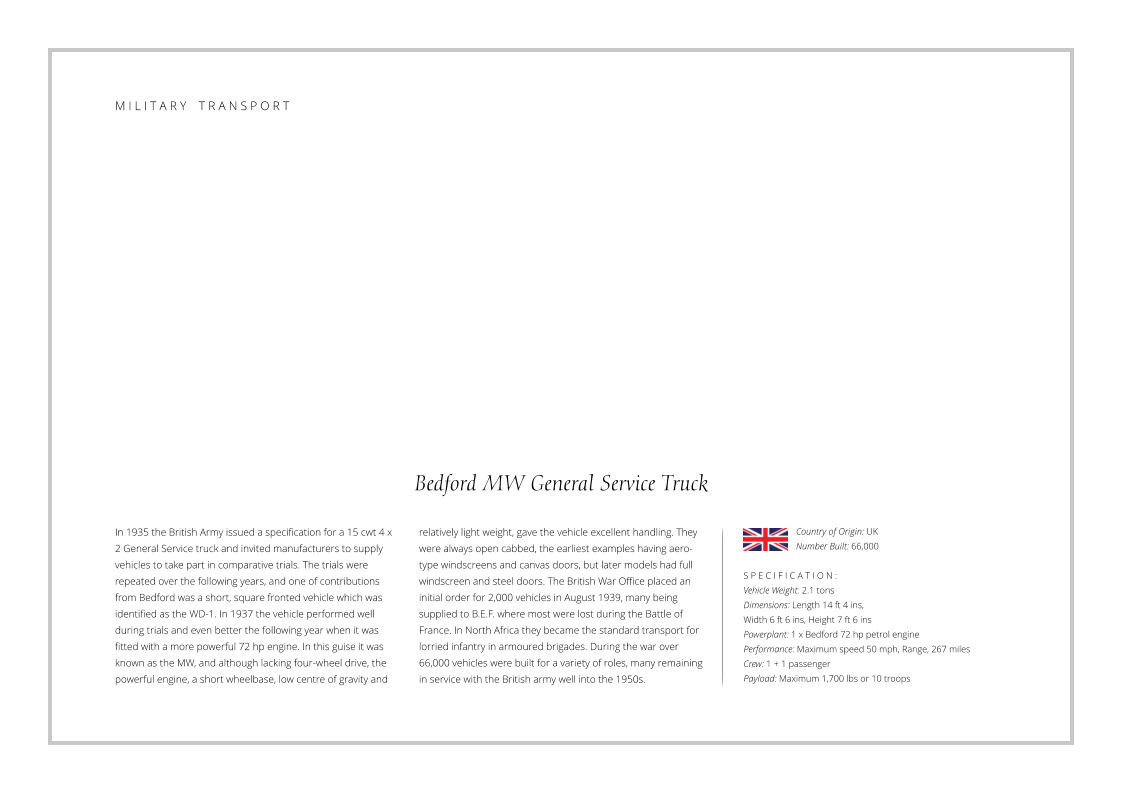
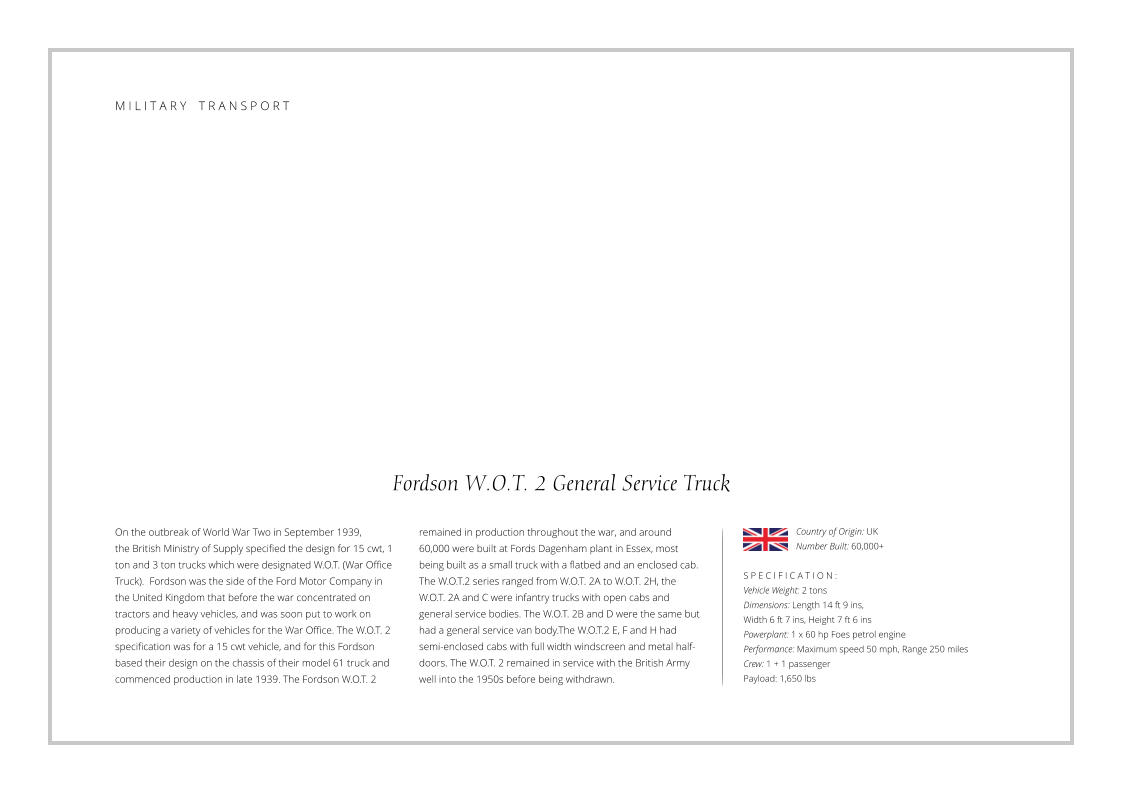



Peerless 3 Tonner
The British began to consider the use of motor vehicles to
meet their transport needs for the army in the early 1900’s. Up
until then the horse or mule had always been the main motive
power for moving the army’s supplies, while the soldier
normally had to walk. The early vehicles were very primitive,
typically with open cabs, solid rubber tyres, twin back wheels to
support the load, leaf spring suspension and the power usually
being transmitted to the drive wheels by chain drive. In 1911
the British Government introduced a subsidy scheme where
manufacturers and private companies received a payment of
S P E C I F I C A T I O N : (Thornycroft J Type)
Vehicle Weight: 4.75 tons
Dimensions: Length 21 ft 9 ins,
Width 7 ft 2½ ins, Height 10 ft
Powerplant: 1 x Thornycroft 40 hp petrol engine
Performance: Maximum speed 25 mph, Range 220 miles
Crew: 1 + 1 passenger
Payload: Maximum 3½ tons
£120 towards the purchase of each lorry that was suitable for
military service, but during any national emergency they would
be placed at the disposal of the armed forces. Thornycroft
produced the J type lorry in 1912 to meet the requirements of
the subsidy scheme, followed by other designs from Dennis,
Commer, Daimler, Leyland, AEC, Albion, Hallford, Karrier, and
Wolseley amongst others, while at least 12,000 Peerless trucks
were obtained from the U.S.A. After World War One, large
numbers of military vehicles became available for sale and sold
to the general public at knock-down prices.
Country of Origin: USA
Number Built: 12,000

Jeffreys Quad
The Jeffrey Quad was one of the most used lorrys in World War
One. It was designed by the Thomas B Jeffrey Company in
Kenosha, Wisconsin in the USA, and was developed as a result
of a visit by the US Army Quartermaster Corps to the Thomas
factory in 1913. It was 2 ton four-wheel drive vehicle, with a
flatbed load carrier dropside and a 2 seat cab. The lorry was
powered by a 29 hp 4 cylinder Buda side valve petrol engine
and transmissin being provided by a four forward and reverse
gearbox. Steering was to all four wheels which gave it a very
small turning radius, while brakes were fitted to all four wheels.
S P E C I F I C A T I O N : (Thornycroft J Type)
Vehicle Weight: 4.75 tons
Dimensions: Length 21 ft 9 ins, Width 7 ft 2½ ins, Height 10 ft
Powerplant: 1 x Thornycroft 40 hp petrol engine
Performance: Maximum speed 25 mph
Range: 220 miles
Crew: 1 + 1 passenger
Payload: Maximum 3½ tons
Production started in 1913, but because of its popularity and
the outbreak of World War One the Jeffrey Quad was ordered
in large numbers, including license production by Hudson,
National, and Paige-Detroit. The Jeffrey company was sold to
the Nash Company in 1916, which produced the Quad under
the name of Nash Quad and at its peak, 11.490 Quads were
delivered in 1918. Apart from the USA, France was the largest
user of the vehicle, while an unknown number were supplied to
the UK, with several being used for the basis of the Jeffrey
Quad Armoured Car.
Country of Origin: USA
Number Built: 30,000+
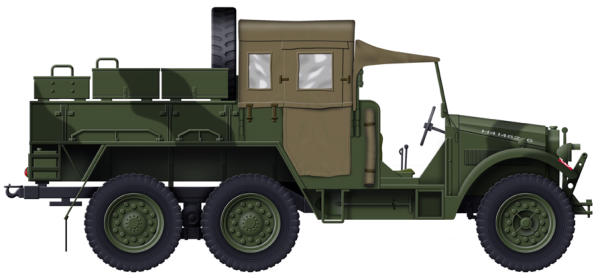
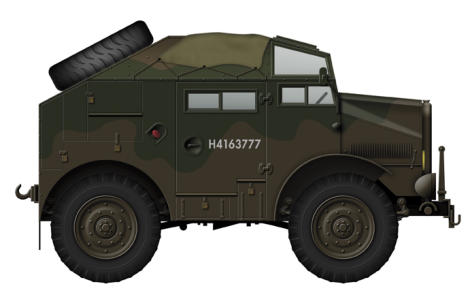
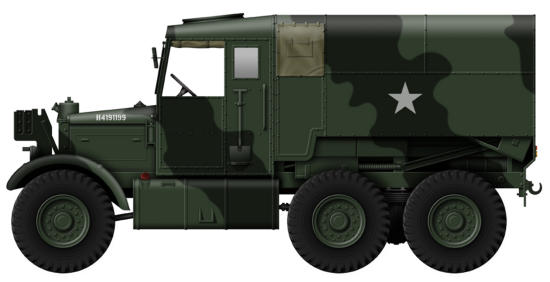
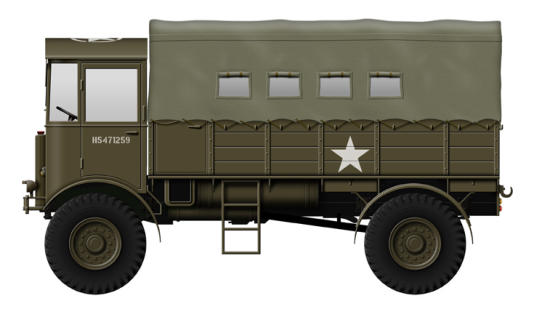
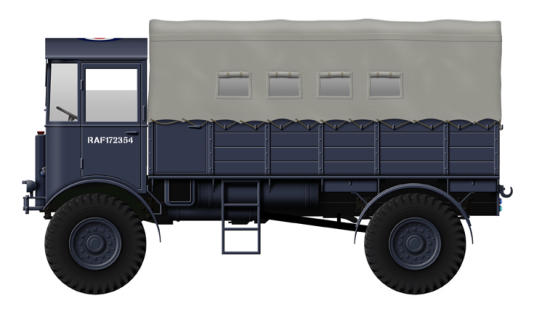
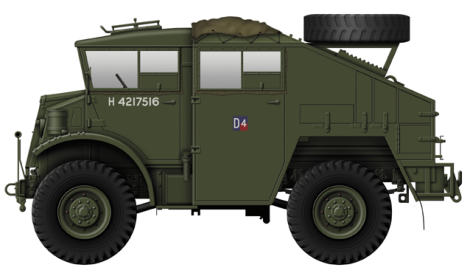
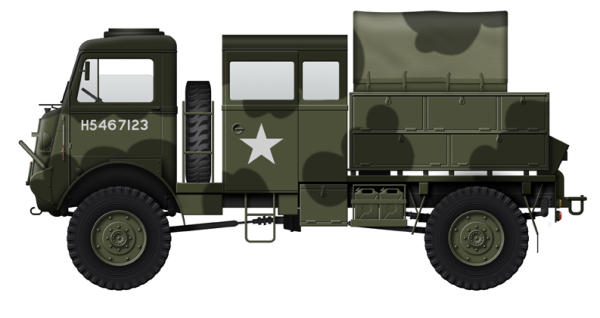
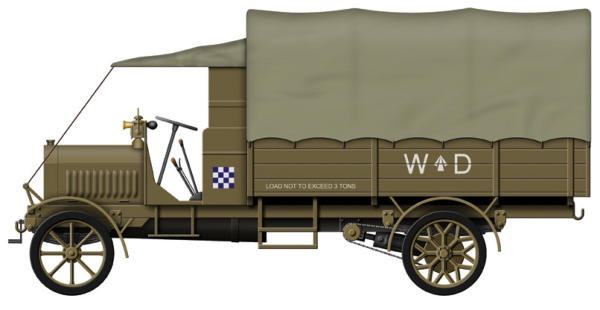
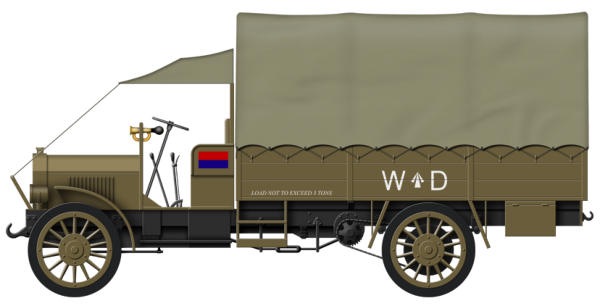
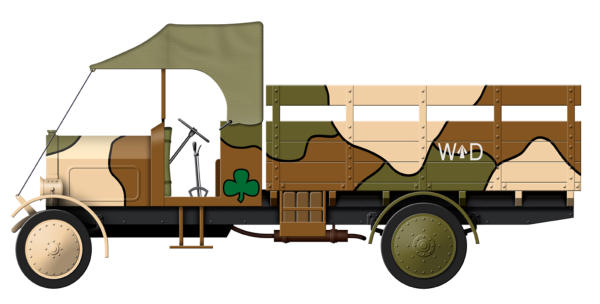
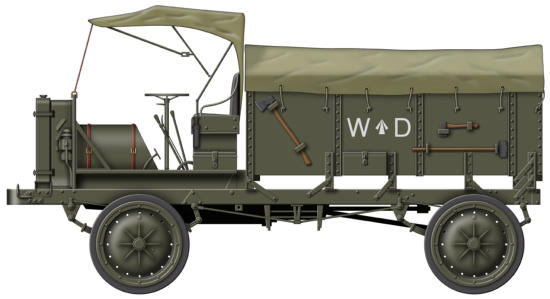
M I L I T A R Y T R A N S P O R T

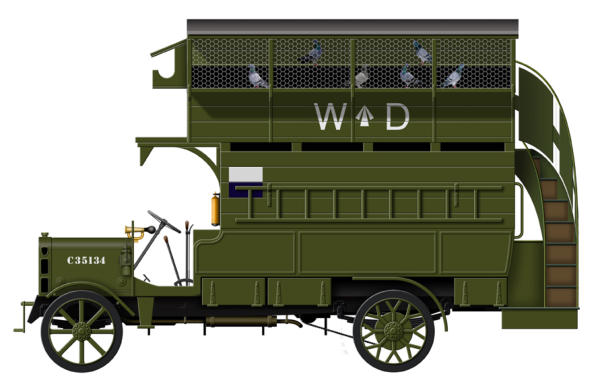

M I L I T A R Y T R A N S P O R T
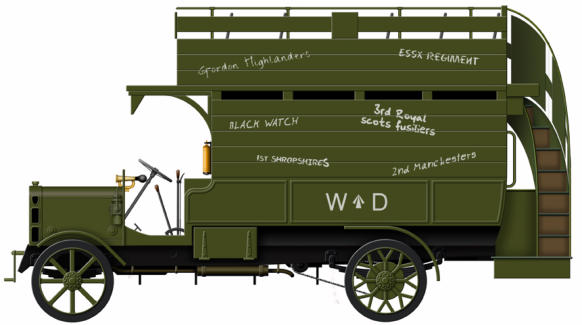
M I L I T A R Y T R A N S P O R T
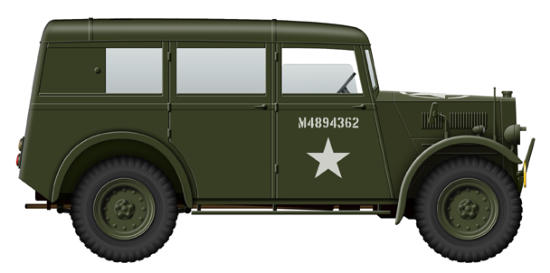
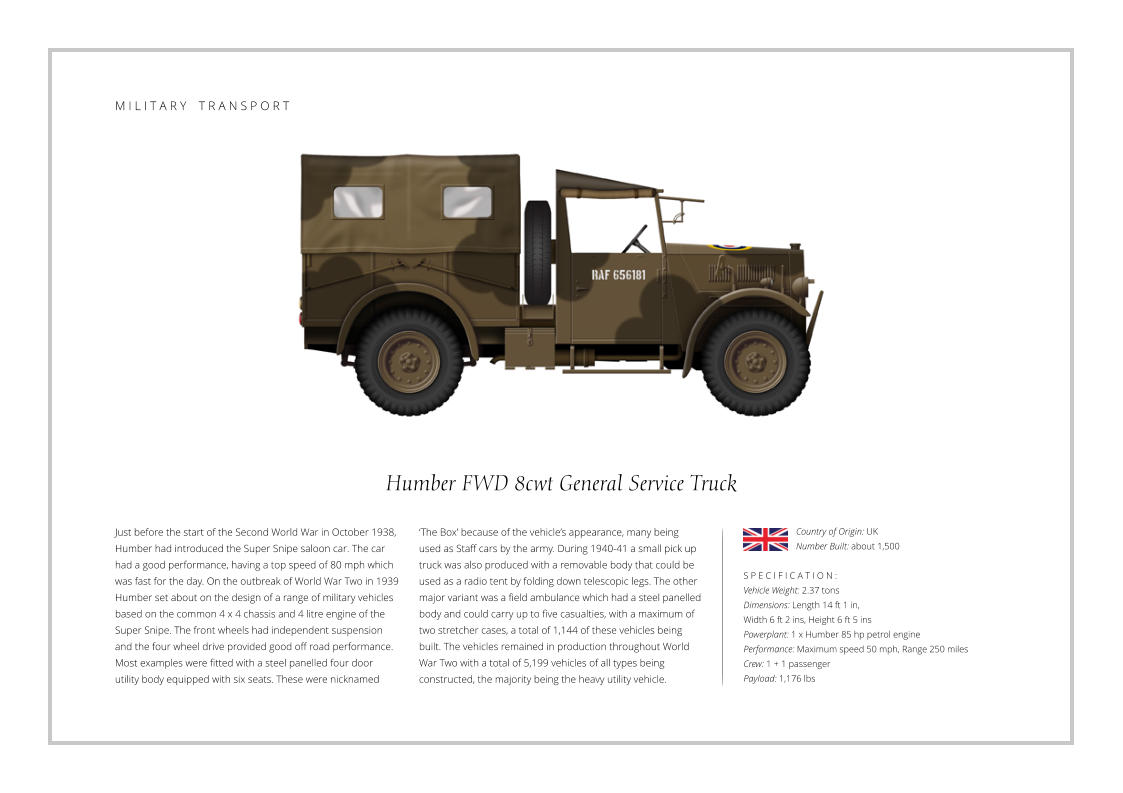
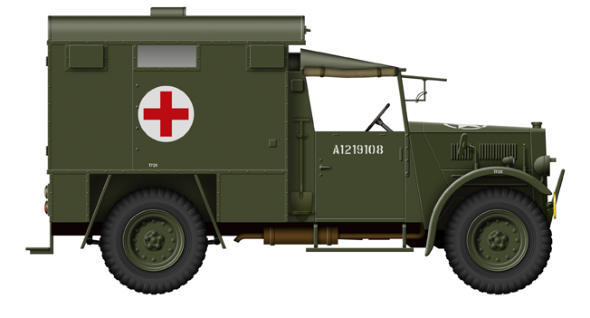
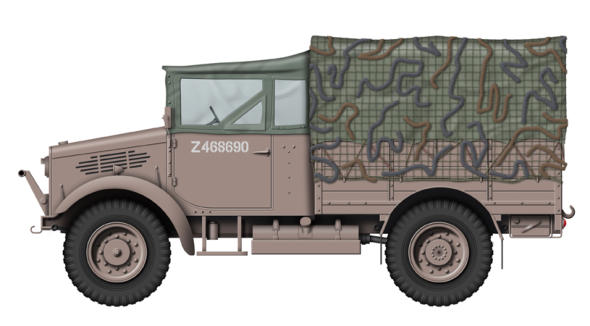
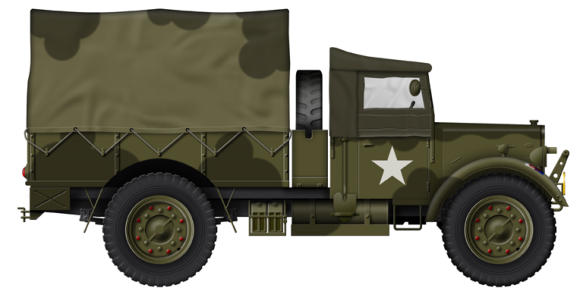










Pages




